1 April
Pacific, Okinawa
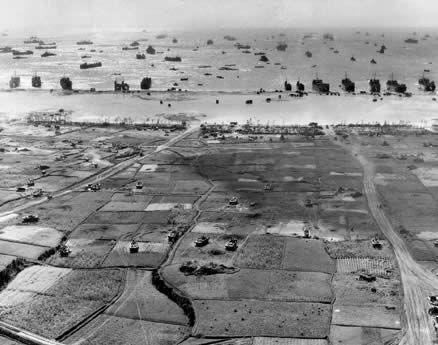
Operation Iceberg, the US invasion of the island, commences. Admiral Chester W. Nimitz, commander-in-chief Pacific Fleet and Pacific Ocean areas, has assigned Vice Admiral Richmond Turner as commander of the amphibious forces and Vice Admiral Marc Mitscher as commander of the fast carrier forces. The US Tenth Army is led by Lieutenant General Simon B. Buckner, and comprises 183,000 men.
The island, only 325 miles (520 km) from Japan, has two airfields on the western side and two partially-protected bays on the east coast - an excellent springboard for the proposed invasion of the Japanese mainland.
The amphibious landing by the US II Amphibious Corps and XXIV Corps is virtually unopposed. The Japanese commander, Major General Mitsuru Ushijima, has withdrawn his 80,000 men behind Shuri, where he has built a major defensive line.
2-3 April
Western Front, Germany
Units of the US First and Third Armies meet at Lippstadt to complete the encirclement of the economically-important Ruhr region.
4 April
Western Front, Holland
Field Marshal Bernard Montgomery’s 21st Army Group begins its offensive to liberate Holland and sweep across northern Germany. As food stocks in Holland are low, this operation is important as the Dutch postwar political attitude toward the Allies will depend on the speed of liberation.
5 April
Politics, Czechoslovakia
At Kosice, the National Front government of Czechs and Slovaks announces its program and proclaims the democratic principles of the Czech Republic. Stating that the liberation of the country is the first priority, it calls on the population to undertake a broad and active struggle against the Germans.
7 April
Sea War, Pacific
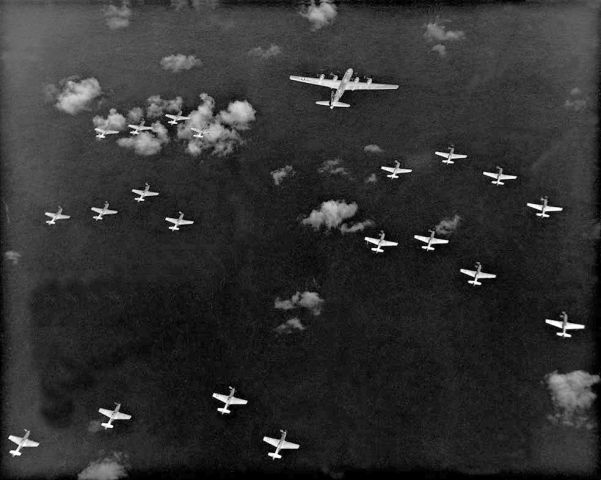
The Yamato, the world’s largest battleship, is sunk at sea by US warplanes while making its way to attack US forces on Okinawa. The battleship is on a suicide mission, with just enough fuel to reach the island.
Air War, Japan
Some 108 P-51s take off from Iwo Jima to escort B-29 bombers heading for Japan. They are the first US land-based fighters to reach mainland Japan.
9 April
Pacific, Okinawa
The US XXIV Corps begins to attack the Shuri defenses on Okinawa. Japanese resistance is heavy and the Americans can make no headway.
9-10 April
Italy, Argenta Gap
The final campaign in Italy begins as the US Fifth and British Eighth Armies commence their fight for control of the Po Valley. The plan of Field Marshal Harold Alexander, commander-in-chief of Allied forces in Italy, is for the Eighth Army to attack westward through the Argenta Gap, while the Fifth Army strikes north, west of Bologna, thereby trapping German Army Group C between the two.
On the night of April 9, after a massive aerial bombardment and five artillery bombardments, the offensive opens with the Indian 8th and New Zealand 2nd Divisions attacking toward Lugo across the Senino River. By dawn on the 10th, Allied tanks are crossing the Senino River over three bridges, with Allied aircraft overhead providing effective support to the operation.
10 April
Far East, Burma
General William Slim’s British Fourteenth Army commences an offensive to capture Rangoon. It is a race against time to take the city before the monsoons begin in mid-May. He must also stop the Japanese forming a defensive line north of Rangoon and halting his advance.
11 April
Western Front, Germany
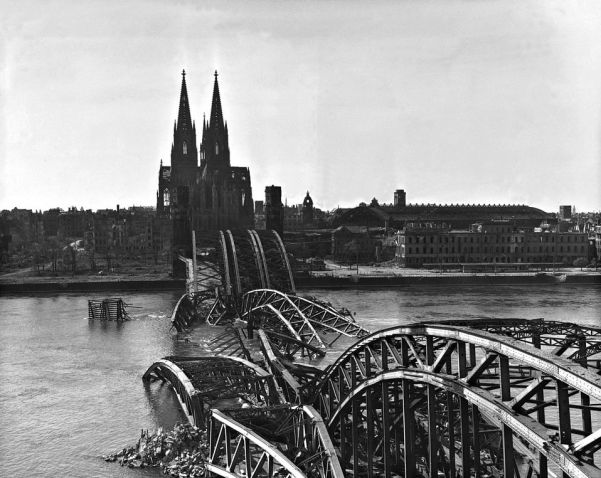
The US Ninth Army arrives at the Elbe River near Magdeburg. An increasing number of German towns are surrendering without a fight, while Hitler’s armies fighting in western Germany are disintegrating.
12 April
Politics, United States
President Franklin D. Roosevelt dies of a cerebral haemorrhage in Warm Springs, Georgia. Vice President Harry S. Truman takes over the position of president, and one of his first decisions is to cancel a plan to launch old, pilotless aircraft packed with explosives against industrial targets in Germany following Prime Minister Winston Churchill’s concern that it may provoke retaliation against London.
13 April
Eastern Front, Austria
The Red Army liberates Vienna.
14 April
Politics, Allies
General Dwight D. Eisenhower, Supreme Commander of Allied Armies in the West, informs the Combined Chiefs-of-Staff that the Allied thrust against Berlin takes second place to the securing of the northern (Norway and Denmark) and southern (south Germany and Austria) Allied flanks. The British chiefs-of-staff are dissatisfied, but acknowledge Eisenhower’s reasoning, and approve his plans on the 18th.
Italy, Argenta Gap
The offensive by the US Fifth Army in northern Italy begins. Preceded by a bombardment by 500 ground-attack aircraft, the US 1st Armored, US 10th Mountain, and Brazilian 1st Divisions attack between Vergato and Montese, and make good progress.
16 April
Eastern Front, Germany
The Soviet offensive to capture Berlin commences. The Soviet plan has three parts: a breakthrough on the Oder and Neisse Rivers; the fragmentation and isolation of German units in and around Berlin; and the annihilation of said units, capture of the city, and an advance to the Elbe River.
The Red Army forces involved are the 2nd Belorussian and 1st Ukrainian Fronts, the Long Range Force, the Dniepr Flotilla, and two Polish armies - a total of 2.5 million men, 41,600 guns and mortars, 6250 tanks and self-propelled guns, and 7500 combat aircraft. German forces consist of the Third Panzer and Ninth Armies of Army Group Vistula; the Fourth Panzer and Seventeenth Armies of Army Group Center; a host of Volkssturm (‘home guard’), security and police detachments in Berlin itself; and a reserve of eight divisions - a total of one million men, 10,400 guns and mortars, 1500 tanks or assault guns, and 3300 combat aircraft.
Italy, Argenta Gap
The 78th and 56th Divisions of the British Eighth Army overcome the Fossa Marina, a canal running northeast from Argenta into Lake Comacchio, with a combination of land and amphibious assaults. The German line has been fractured, and the Allies are through the Argenta Gap.
17 April
Pacific, Philippines
Elements of the US X Corps land on Mindanao.
18 April
Western Front, Germany
All German resistance in the Ruhr industrial area ceases; 370,000 prisoners fall into Allied hands.
Western Front, Holland
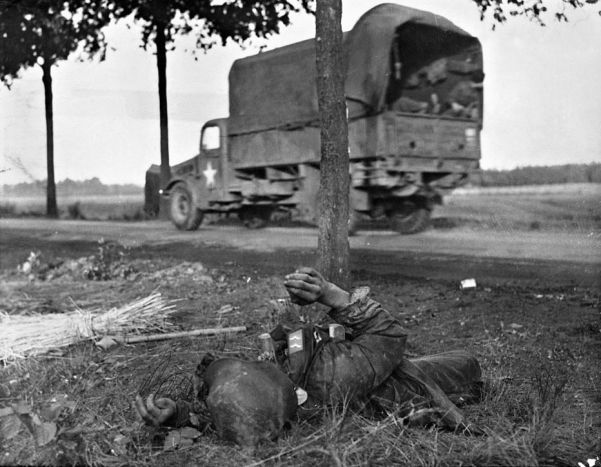
The Canadian I Corps, encountering sporadic resistance, has reached Harderwijk, thus isolating German forces in the west of the country.
20 April
Western Front, Germany
Nuremberg, the shrine of National Socialism in southern Germany, falls to the US Third Army after a five-day battle. The city had been defended by two German divisions, Luftwaffe and Volkssturm battalions, and ringed by anti-aircraft guns, and the German commander had vowed to Hitler that he and his men would fight to the bitter end.
Eastern Front, Germany
Marshal Georgi Zhukov’s 1st Belorussian Front has smashed German resistance on the Oder River and is advancing toward Berlin. The Soviet troops have had to overcome three defensive belts, each consisting of two or three layers of troops.
22 April
Eastern Front, Germany
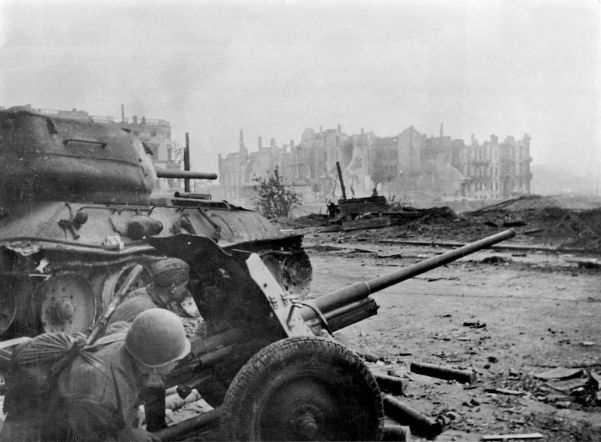
The Soviet high command has ordered Marshals Georgi Zhukov and Ivan Konev to complete the encirclement of German forces in the forests southeast of Berlin by April 24 to prevent them breaking through to the city to increase the strength of its garrison. This move will also close the Red Army ring to the west of Berlin to prevent the escape of enemy units from the capital of the Third Reich. Adolf Hitler, spurning a chance to flee to Bavaria, decides to stay in the city and supervise its defense.
Italy, Argenta Gap
The South African 6th Armored and British 6th Armored Divisions meet at Finale, north of the Reno River. The Germans are in headlong retreat from the Argenta Gap toward the Po River, leaving most of their guns, tanks, and transport behind.
23 April
Western Front, Germany
The last German defenders in the Harz Mountains are captured. Farther north, the British Second Army enters the outskirts of Hamburg.
25-27 April
Eastern Front, Germany
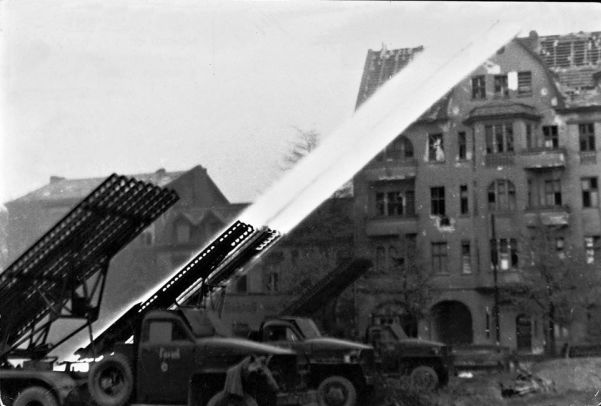
Marshal Georgi Zhukov’s 1st Belorussian Front and Marshal Ivan Konev’s 1st Ukrainian Front complete the encirclement of Berlin, trapping its defenders. The assault on the city begins on the 26th, preceded by heavy air strikes and artillery bombardments, with attacks from all sides simultaneously. By the 27th, ‘Fortress Berlin’ has been reduced to an east-to-west belt 10 miles (16 km) long by three miles (5 km) wide. German forces within the city are affected by widespread desertions and suicides.
28 April
Politics, Holland
The first meeting between Allied and German representatives takes place in western Holland. The Reichskommissar for the Netherlands, Artur von Seyss-Inquart, has offered the Allies the freedom to import food and coal into German-occupied western Holland to alleviate the plight of the civilian population if they will halt their forces to the east. This leads to a cessation of hostilities and saves the country from the ravages of further fighting.
Politics, Italy
Mussolini’s puppet fascist state collapses along with German resistance in the north of the country. Attempting to flee to Austria, Il Duce and his mistress Claretta Petacci are captured by partisans. On the orders of the Committee of National Liberation, Walter Audisio, a communist member of the Volunteer Freedom Corps, shoots them both. Their mutilated bodies are later hung up in the Piazzale Loreto, Milan.
Eastern Front, Germany
Soviet troops begin the assault on the Reichstag by attacking across the Moltke Bridge. The Germans launch furious counterattacks, and at the strongpoints of the Ministry of the Interior (defended by SS troops) and the Kroll Opera resistance is fierce.
29 April
Politics, Germany
Adolf Hitler, now confined to the ‘Führerbunker’ behind the Reichs Chancellery, orders Colonel General Ritter von Greim to leave Berlin and arrest Heinrich Himmler, head of the SS, for his attempts to seek peace with the Allies. Greim had been appointed commander-in-chief of the Luftwaffe on the 23rd following Hermann Goering’s attempt to negotiate with the Allies on his behalf. Hitler publishes his ‘Political Testament,’ in which he blames international Jewry for the outbreak of the war. He nominates Admiral Karl Doenitz as his successor, and marries his long-time mistress, Eva Braun.
Politics, Italy
As a result of behind-the-scenes dealings between Karl Wolff, senior commander of the SS and police in Italy, and Allen Dulles, head of the American Office of Strategic Services (OSS) in Switzerland, Wolff and General Heinrich von Vietinghoff, German commander-in-chief in Italy, sign the instrument of unconditional surrender in northern Italy, to come into affect on May 2. The Swiss, the Allies, and many Germans and Italians in Italy have been concerned about a drawn-out campaign in Hitler’s ‘Alpine Fortress,’ and the probable destruction of north Italy’s industry as a result of Hitler’s scorched earth policy.
Eastern Front, Germany
The trapped German force around Frankfurt-an-der-Oder attempts to break out of its pocket to reach Berlin. This results in three days of savage fighting in which it is annihilated. Of its original strength of 200,000 men, 60,000 are killed, and 120,000 taken prisoner. Only small groups succeed in slipping through Soviet lines.
Home Front, Holland
The RAF begins dropping food supplies to alleviate the plight of the country’s starving civilians.
30 April
Politics, Germany
Adolf Hitler and Eva Braun commit suicide in the Führerbunker in Berlin. Hitler shoots himself, while Braun takes poison. Their bodies are later cremated by the SS.
